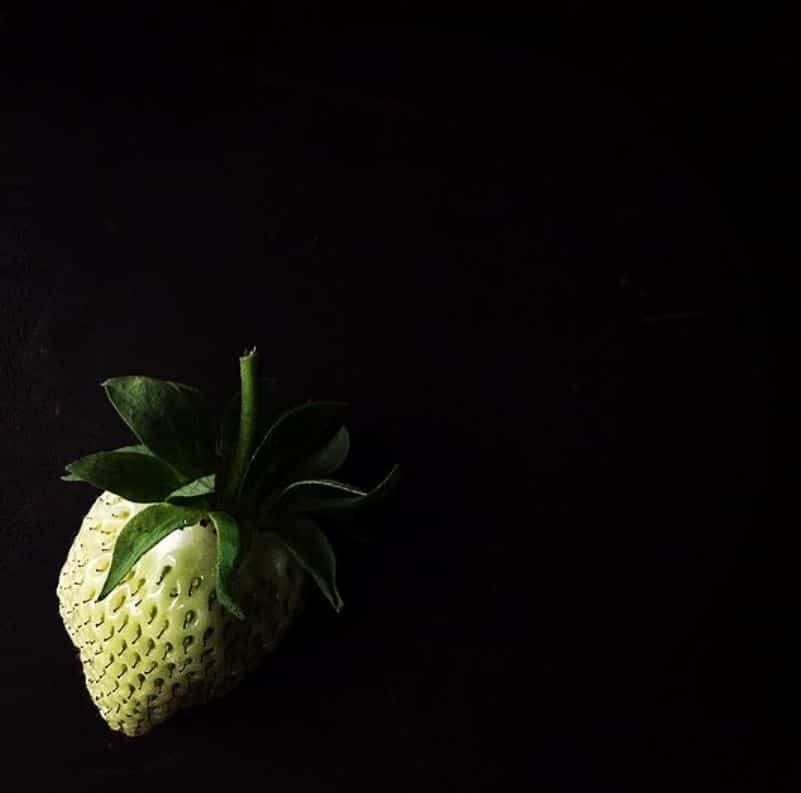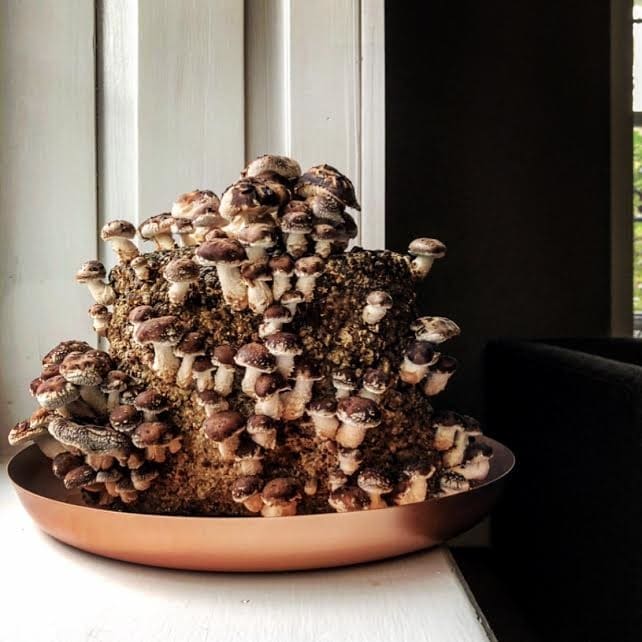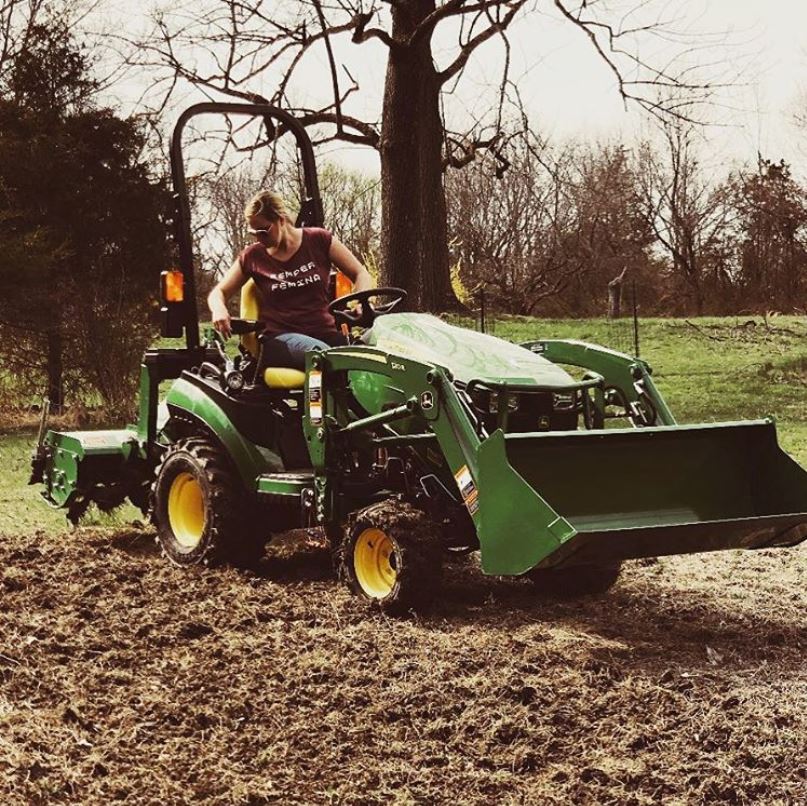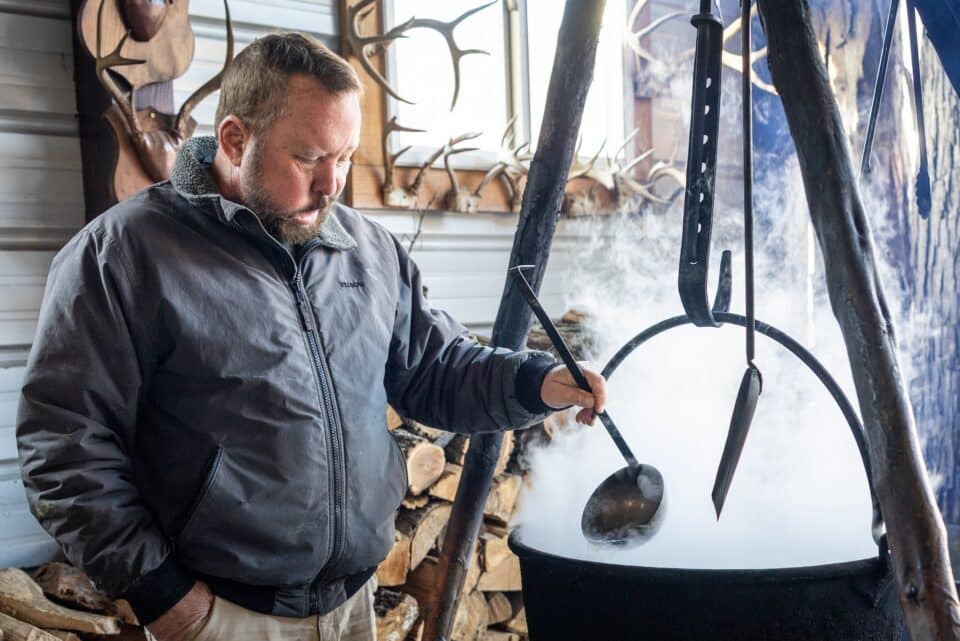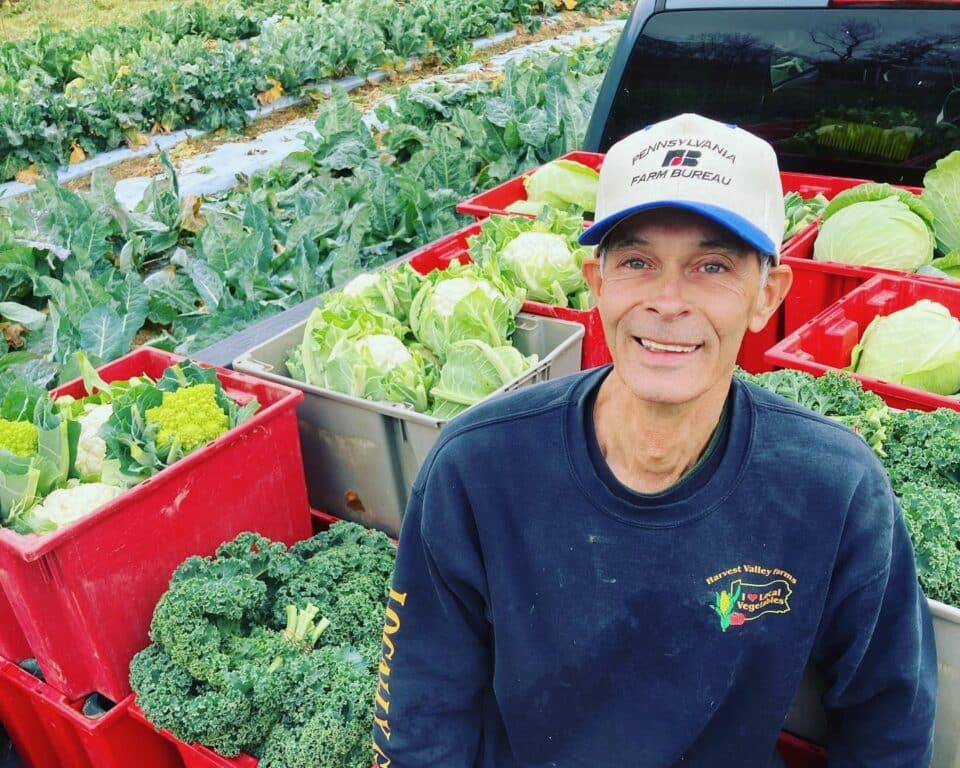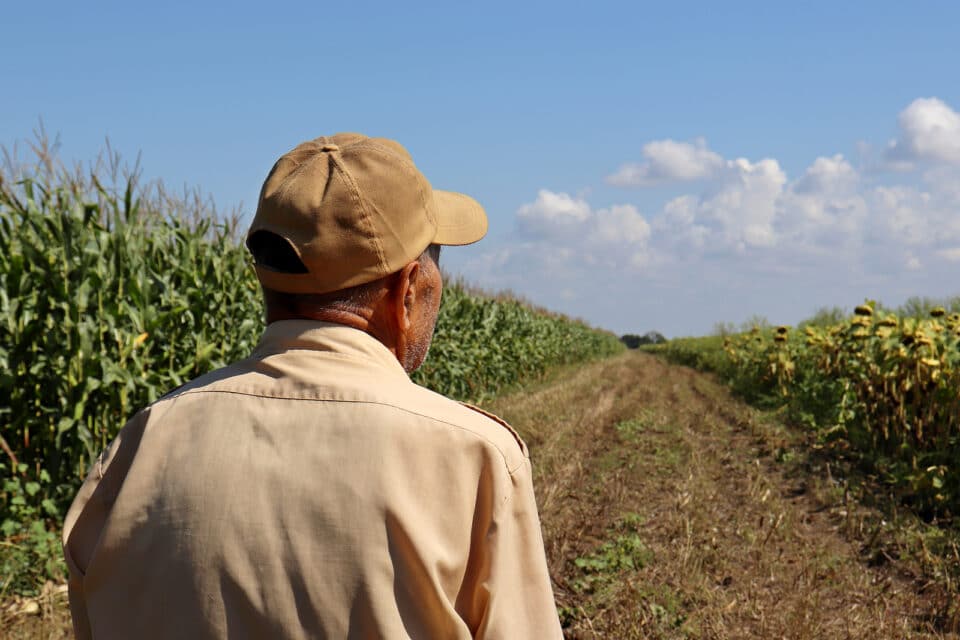Perhaps you’ve seen ingredients on the menu of your favorite restaurant that are listed as “foraged.” In this post-farm-to-table era (not that it’s over; quite the contrary: the term is so ubiquitous as to almost be invisible), another way that restaurant chefs can show how hyper in-tune with the seasons and the local flora they are is to use foraged ingredients.
“Foraged” really just means found. For the home cook, that could mean dandelion greens from a nearby meadow or rhubarb that sprouts up each spring in a neighbor’s yard. You might find enough for a meal or two, and it’s a fun and novel way to make dishes more interesting. But, for pro chefs, their needs are different: Not only do they probably not have time to go traipsing through the woods looking for exotic mushrooms, but they need their foraged goods to be safe, come in large enough quantities to actually use in specials for a week or two, and they desire esoteric, more obscure edibles that will delight their guests.
So, who are the people who know how (and where) to forage specialty items for chefs? We met one recently: Heather McMonnies. She used to run the exotic mushroom company, Woodland Jewel, with her ex-husband. But, after their split, she purchased a three-acre specialty farm in Schwenksville, Pa., where she grows and forages food for her new business, Food Hedge.
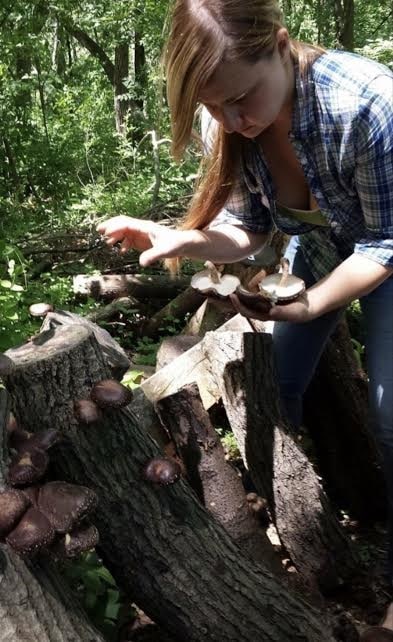
By cultivating her land and learning the best places in the surrounding area to look for rare and exotic things, like wood sorrel, raw black walnuts and green strawberries, McMonnies has become one of the go-to foragers for chefs at high-end restaurants in the Greater Philly area, like Russet, Fork, Hungry Pigeon, Zahav and Marigold Kitchen. She also provides botanicals for several distilleries, including Philadelphia Distilling and Manatawny Still Works, and she also works with BABA’s Brew.
We wanted to learn more about the hybrid farmer/forager path that McMonnies is on, so we sat down to chat with her and to learn about Food Hedge:
PA Eats: Can you tell us a bit about Food Hedge? What does the name refer to?
Heather McMonnies: Food Hedge is my brainchild. After I managed a mushroom farm with my ex, I learned quite a lot, and wanted to branch out into a completely new and varied business model with a specialty farm that offers rare and foraged goods to chefs.
“Food hedge” is a term borrowed from permaculture, meaning a stacked, layered and consistent year-round way of growing in very small square footage. But to me, it means more about stewarding your own interesting food stuff, stuff you can grow, stuff to think beyond the general tomatoes and cucumbers, and to think outside of growing just one or two seasons per year. I’m fascinated with walking through the woods and coming across some crazy mushrooms or tree flowers, things that grow in wild abundance in zone 7 where we live.
How do chefs order from you? Why do they choose Food Hedge versus other specialty food providers or distributors?
I place call for orders on Monday, usually through Instagram, and deliver on Thursday or Friday. I do all of the deliveries myself. My offerings range from evergreen berries to tree bark, things you can extract a lot of interesting flavor from that are available and wild and abundant. I grow edible flowers and wild greens, like nettles and fiddleheads, and I do all sorts of really rare, obscure berries, tree flowers and specialty mushrooms within season.
https://www.instagram.com/p/BjHxMVfBvZa/?taken-by=food_hedge
Chefs are very accustomed to having what they want when they want it, and what I like to provide is the actualization of a little better bottom line. I don’t have all the overhead costs of shipping; I do all of the deliveries myself, and try to get pre-orders for as many things as I can. Gooseberries and red currants are going to be crazy by late June, so I say to get your pre-orders in now! A lot of people want green berries, and some folks want them ripe, so I kind of know what my harvest will be and manage it. My berry harvests for the year are spoken for before the bushes are even bearing fruit!
Green strawberry
I think this is the only way to make a sustainable farm make sense, business-wise. A lot of my time is spent finding ways to help chefs set themselves apart from the competition. I’m always looking for new folks to work with, or have conversations with, or look at their food costs with them. Food costs are crazy, and I try to not be part of the problem, but offer targeted solutions.
I would love to work with more female chefs … they approach their craft a little differently. There are a huge number of female pastry chefs I work with. One of the coolest ladies I work with is the purchasing manager at Fork, Ana. She’s shrewd and cost-watching, really knows her stuff, and is always full of questions.
Is everything you provide for chefs grown on your farm or foraged?
In addition to the foraged stuff, I do import things during specific times of the year. Like for truffles, a gorgeous luxury food product, I do work with a few importers, especially during the holidays. The best ones come from Europe because of the old growth forests, and they’re not grown, they’re found. It’s not all from Pa., and I have to be upfront about that.
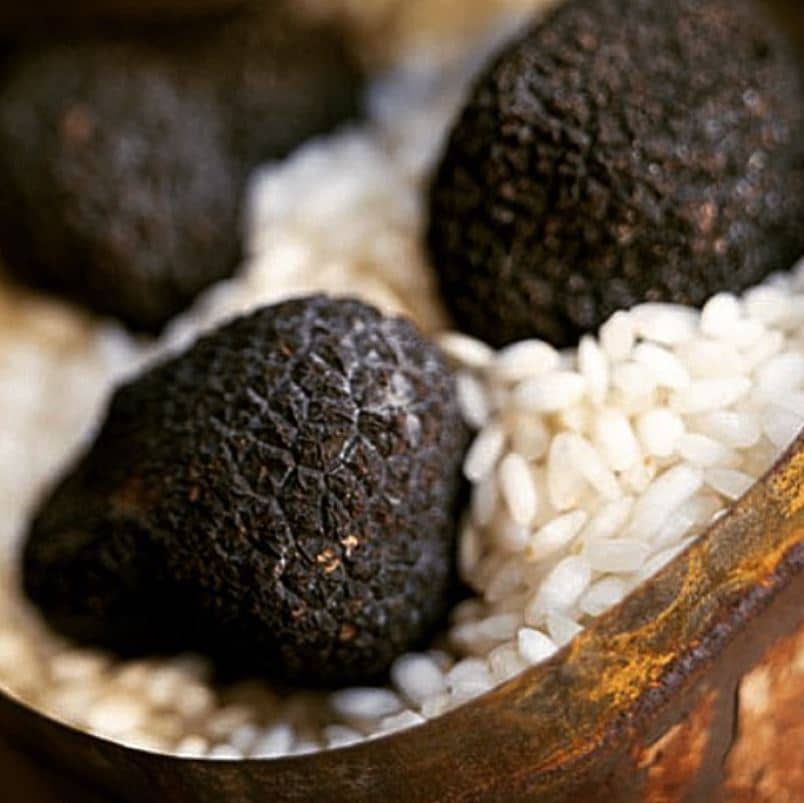
Périgord truffles
Do you sell anything to the general public?
I do offer a grow-at-home shiitake mushroom hedge! I took the way folks grow commercial shiitake, in these little sawdust blocks with a few ingredients mixed in, and made them smaller. I have a whole bunch for sale right now at all of the MOM’s Organic Markets throughout the region. It’s a cool product because it touches on food, but also science. It’s a little bit gardening, but not necessarily green thumb-gardening. It’s not the first or only grow-it-yourself kit (though I call it a “hedge”), but what I’ve learned is that people are fascinated by it … the way mushrooms are grown and pop up overnight is a little bit of a mystery for people who weren’t dragged through the woods by a parent or grandparent.
How did you learn how to do all this stuff?
I don’t have any background in agriculture or permaculture. I was a trained curator and art historian for all of my pre-motherhood career, so it’s been about six years of an intense learning curve, all self-taught, running a farm, managing a foraging business, being a business owner, learning on the fly and asking a lot of questions. It’s intense, but I love being a work-at-home mom. My two kids are school-aged now, so I’m no longer carrying them around with me as I go foraging.
For the foraging, I have exclusive foraging rights in specific places throughout the region, some as expansive as 300 or 400 acres on private estates, and some of those I pay for. I’ve relied on a great, almost global community of folks, mostly through social media, who are open and welcoming in terms of sharing knowledge about things that are and are not edible, and info about how to use a lot of those things. I interpret to these chefs, who are my bread and butter, that we can grow so much [locally]. I work with some folks who love chestnuts and persimmons, things that make you think of Tuscany, and when you really look at the growing seasons, there’s a lot of similarity between certain regions in Italy and growing regions here. We might not have the old growth or soils of wine regions, but we can enhance the crops and specialty crops that we can grow here in Pa.
How do you deal with growing and foraging in such limited amounts? It seems like a tricky model.
I have folks who are really specific within times of the year, like Fork; I harvest a few thousand pounds of wild American persimmon for them every year. Sometimes, folks get into a bidding war and there’s a good-spirited showdown. They have really successful dishes they add these ingredients to, and their clients are looking for those. Some hyper-seasonal things I sell, like tree flowers and blossoms, are literally around one week only. That adds a little mystic and cache.
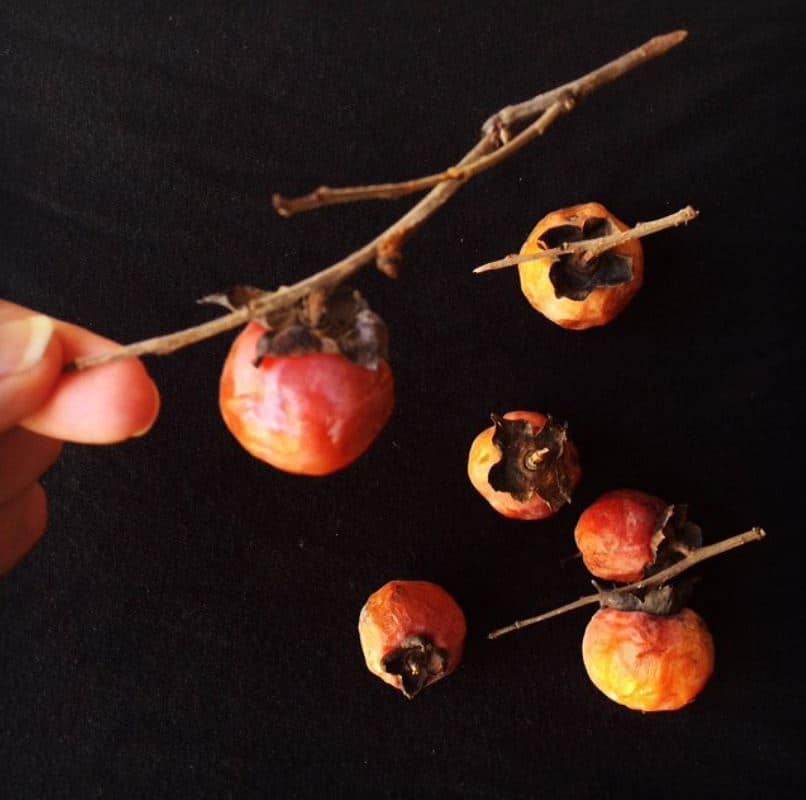
Wild American persimmons
With the foraged stuff, I can always go find more, with the grown stuff, I set my expectations low. I’m trialing this new lemon gem marigold flower — if we’ve got a ton they’re yours, if we get five then I know how to do this differently next year or during the next seeding. Even though I like to talk about abundance, I communicate the grow-to-order stuff from a perspective that “this is limited, and I don’t know how much I’m going to get out of this.” If I have a crop that is under-performing, I’ll communicate that very clearly up front. If there aren’t as much of things, I try to facilitate a collegiate spirit and encourage clients to share with each other.
Do your kids like to farm and forage with you?
This is part of their life and reality. They were born on a farm. Now that they’re a little older, their help is a little more intentional and heartfelt.
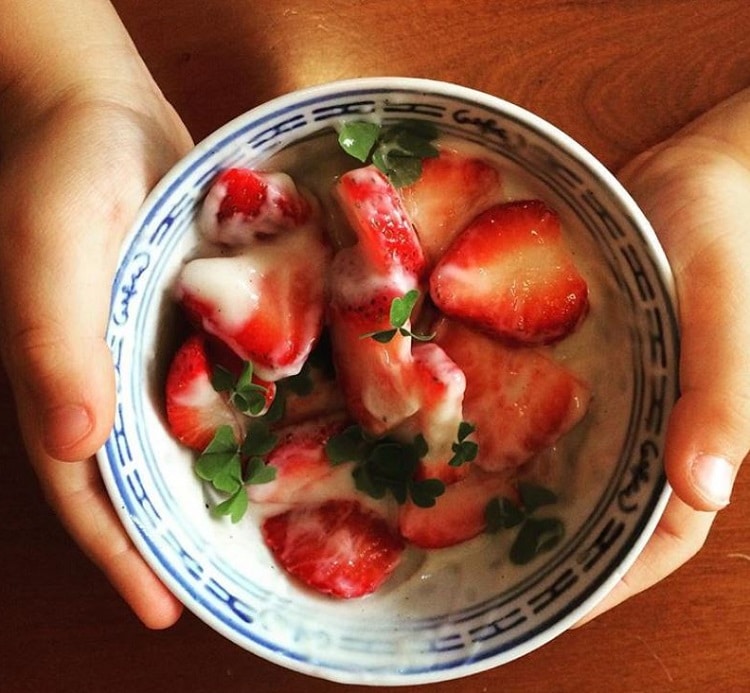
The one rule I have is, if you find something and you want to try it, they have to tell me what the name is first and correctly identify it. They’ve learned along with me. I hope I’m teaching them something cool about growing their own food.
Follow along with McMonnies’ foraging and farming adventures via Food Hedge’s Instagram account. If you’re a chef in the Greater Philly area who would like to order from Food Hedge, get in touch through social media!
- Photos: Food Hedge
